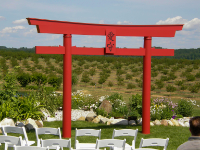Noted about the ancient forum software, I'll use the upload function instead of pasting then. So if I can remember where I was... With the start of a new campaign, my group decided we'd switch from D&D and give Daggerheart a try. Compared to 5E and Pathfinder's more strict grid-based movement, Daggerheart is intentionally less precise and just uses ball-park distances (see the new Range Scale feature on the Measuring Tool in my screenshot). The thing is, the grid being enabled still shoe-horns tokens into snapping to cells even if the Range Scale is enabled unless you manually disable snapping on each token. I don't want to disable snapping for everything because Roll20 treats everything as a "token" when it is dragged into a scene, and I also can't keep the grid disabled because I need that snapping behavior for precisely aligning maps and sub-objects like additional floors of towers (hidden on the GM layer in my screenshot above), or tree canopies for the foreground layer. Since repeatedly changing settings douses my creative spark during prep and takes me out-of-the-scene when I'm GMing, I've tried to simplify as many of these repetitive tasks as I can using macro buttons: changing grid opacity between 0% and 50%, toggling the token menu on/off, toggling grid snap, faking a "ring" on tokens that lack one (2 auras overlaid), as well as incrementing/decrementing counters, HP, and Stress. The thing is, I hate clutter which is exactly what's starting to accrue as I find the need for more and more macros. As such, I've been trying to consolidate the functions that I simply want to be able to toggle on/off as much as possible. Unfortunately, even though I'm a sys admin IRL, I'm not a developer and code pretty much makes my eyes glaze over after more than a few minutes. As for why I'm splitting up layers of Czepeku's Island Toll Castle like in that screenshot? Long and short of it is that on more complex maps with multiple levels and PCs who might be in different areas, repeatedly switching scenes takes longer than I'd like and is disruptive because it splits PCs across multiple scenes. Layering the map-tiles works well enough visually, until such a time as PCs are on different floors. Unfortunately, since different floors have different placements for doors and walls, that also complicates drawing the light-blocking walls, doors, and windows on a single layer. As a work-around, separating each room in Photoshop into its own PNG, and cropping them to the same grid spacing as in Roll20 solves this. I can then hide the additional rooms on the GM layer and swap them in/out as the party explores. (Probably need to make a button for that too since I keep forgetting the keybinds.) While I could stack them in-place and repeatedly call Send to Back, that's not great either. First off, it requires my middle-aged brain to remember which floors are what from when I was prepping a few weeks prior. Secondly, in the case of the 3-level tower in the SE corner, stacking them is inferior to being able to display all 3 floor separately should the party be split-up between floors. This is a big part of why leaving the grid on during play (and quickly revealing/hiding it so I can visually line stuff up), and disabling snap on the tokens has proven useful. Another use case for this setup is due to how the Foreground layer functions. In a different Daggerheart campaign, I recently ran a bandit ambush using the Bandit Ambush Pack from 2-Minute Tabletop. In that pack, they separated the tree canopy into 3 PNGs, but unfortunately instead of just revealing a radius around the character like with Fog of War, Roll20 instead reveals what's under the entire PNG. Sooo it was once again back to Photoshop to crop each tree to a matching grid so I could get a more granular effect in Roll20 -- and for that, grid snapping on the Foreground layer was essential even though it didn't want it at all on the Token layer:



